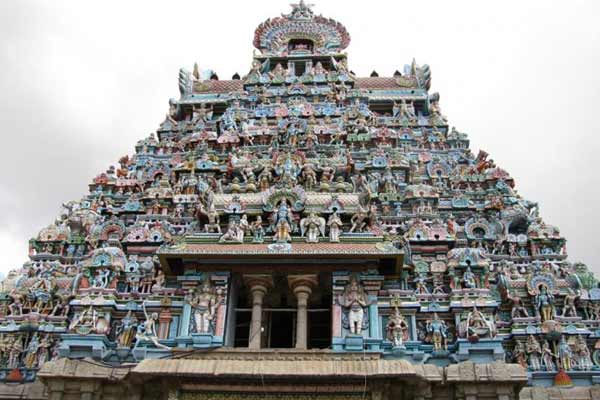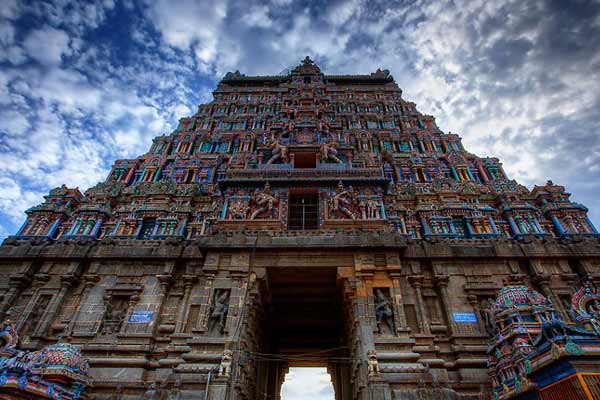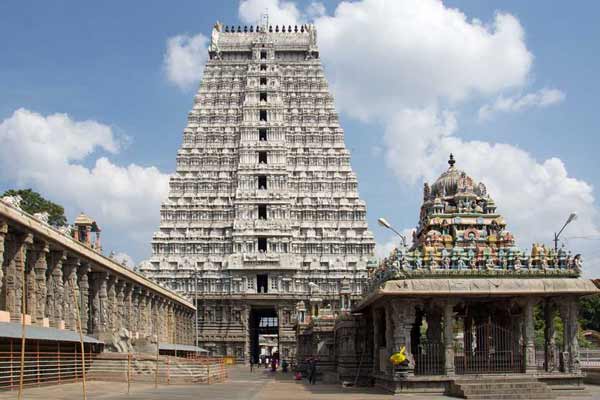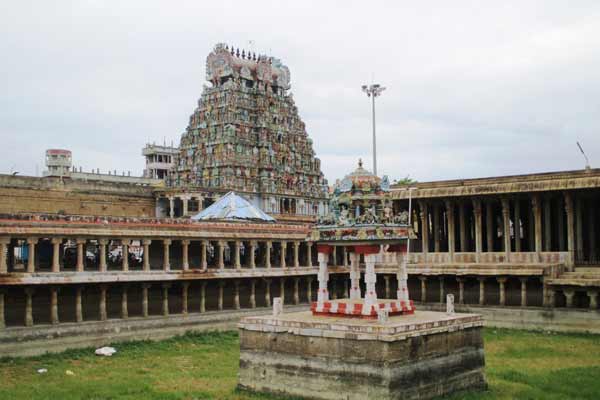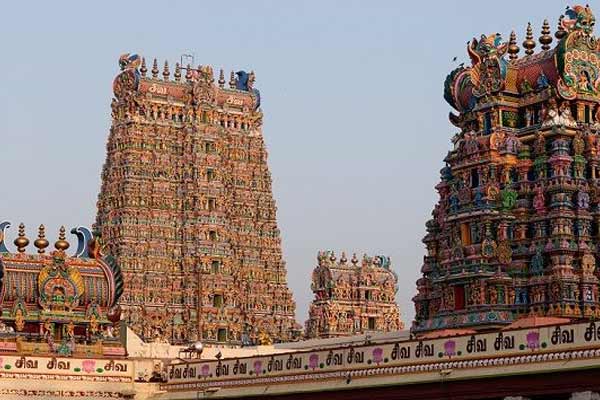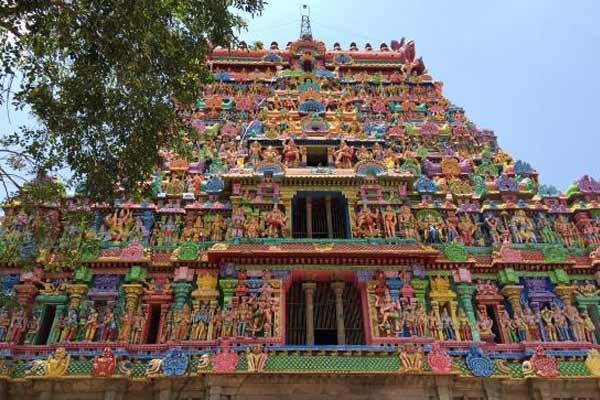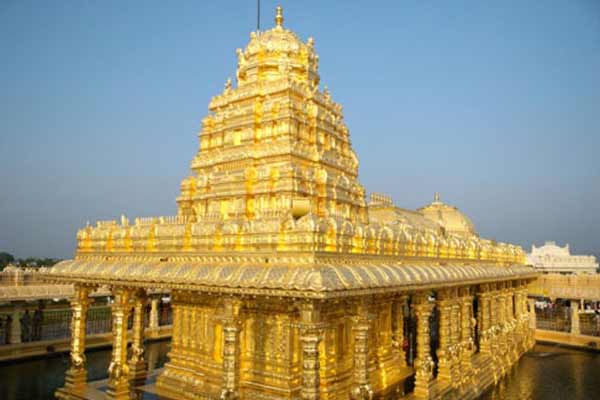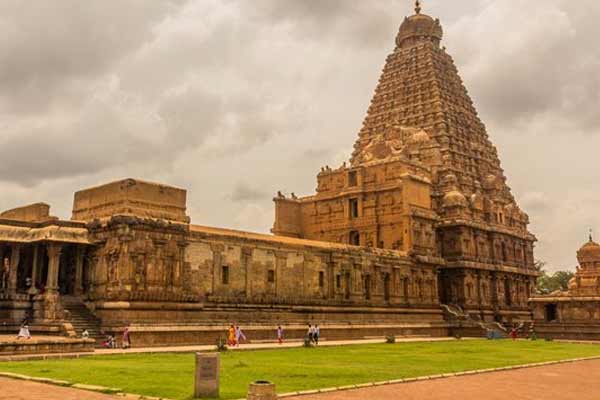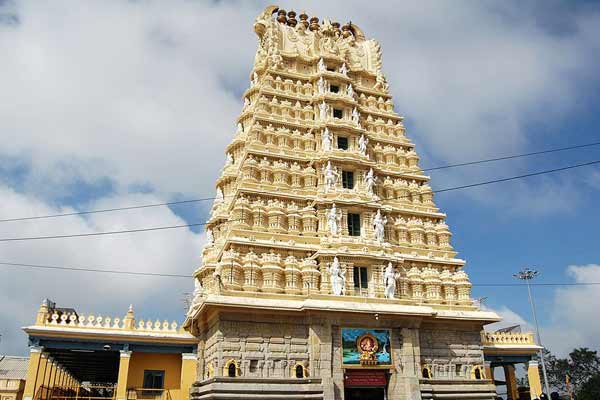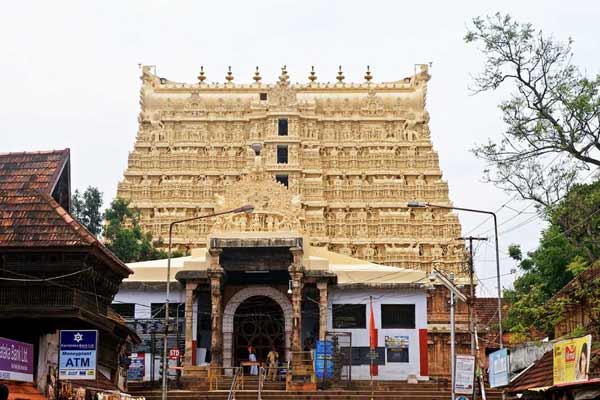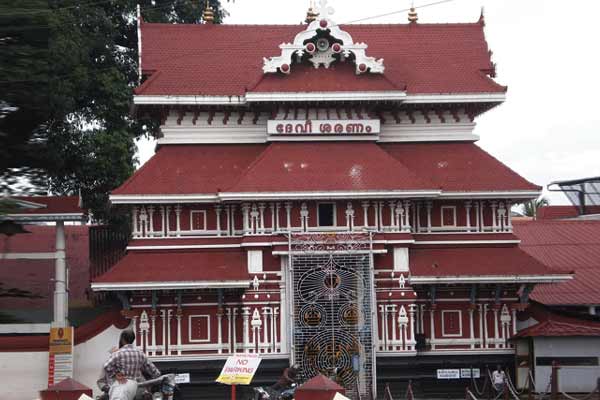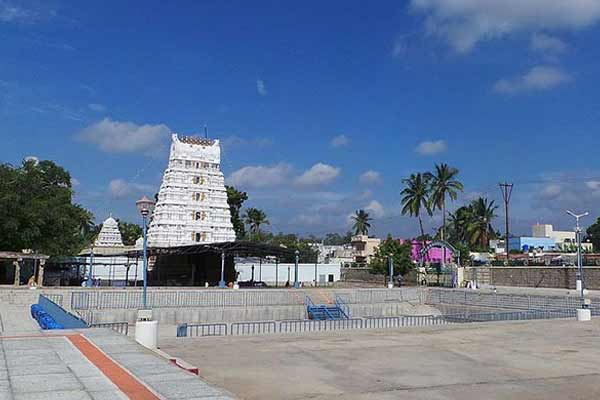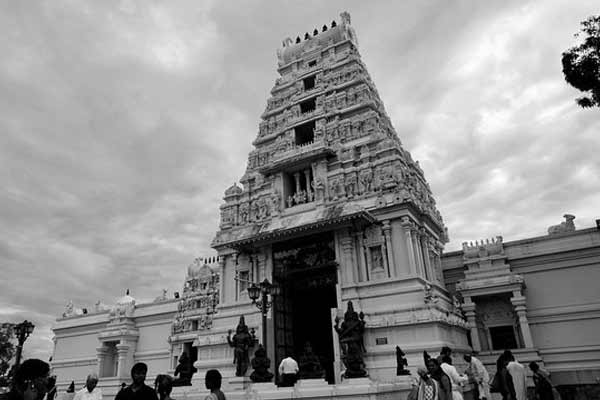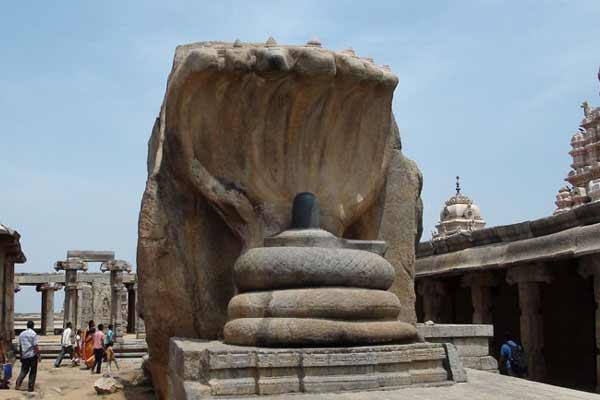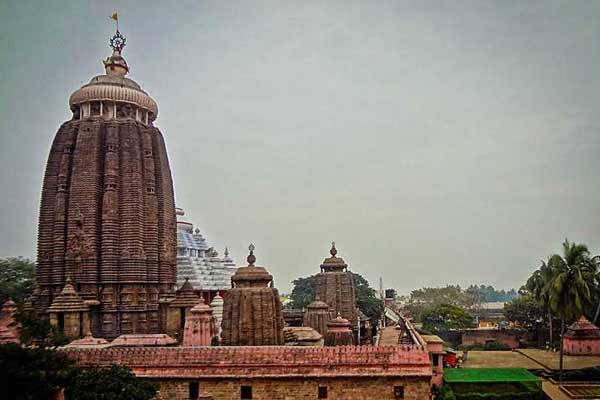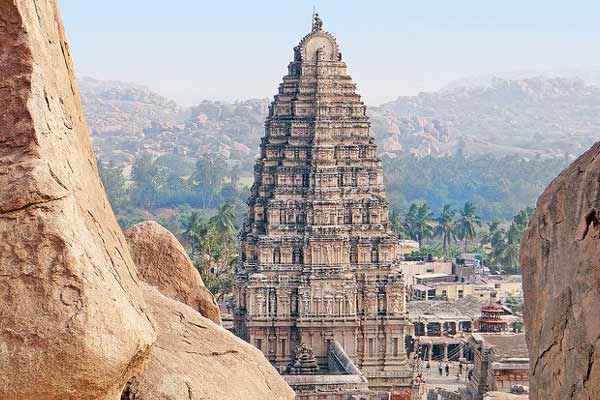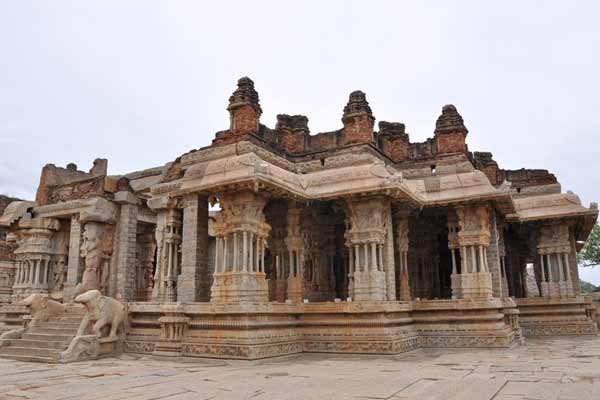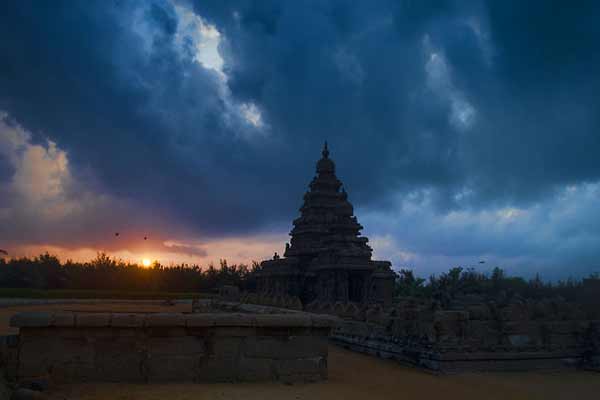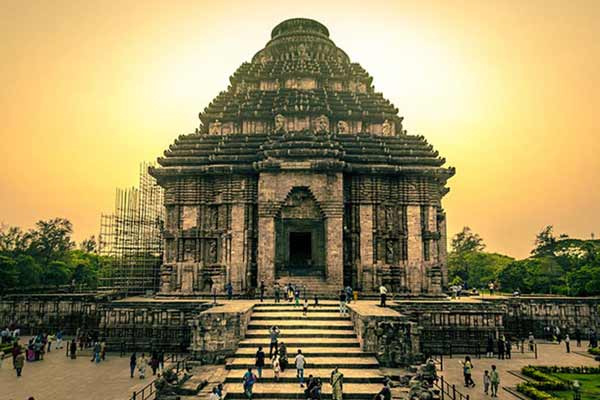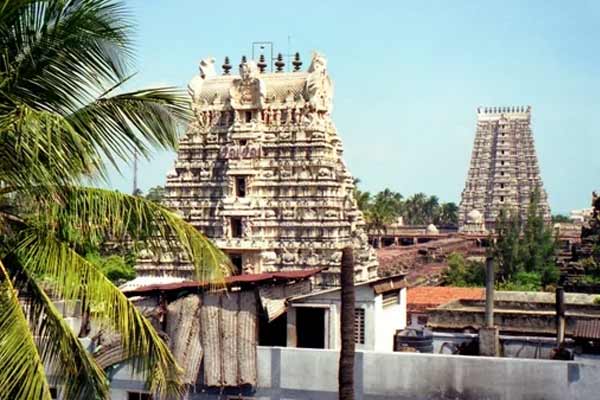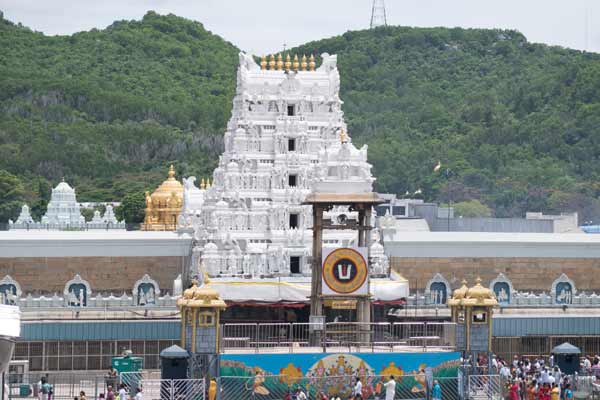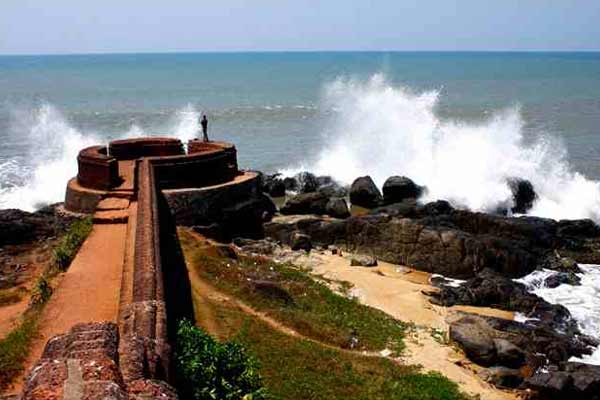

At a distance of 1 km from Srirangam Railway Station, 9 km from Trichy Railway Junction, 62 km from Thanjavur, 145 km from Madurai & 327 km from Chennai, Srirangam is well known for Sri Ranganathaswamy Temple which is the foremost of the eight self-manifested shrines of Lord Vishnu. The temple is considered the first among 108 prominent Vishnu temples and also one of the popular Tamilnadu tourist places.
Sri Ranganathaswamy Temple is one of the most famous temples in South India, constructed in the Dravidian style of architecture. Built across an area of 156 acres, this temple is dedicated to Ranganatha, a reclining form of Hindu deity, Lord Vishnu. This temple lies on an island formed by the twin Rivers Cauvery and Kollidam. Though the temple existing since 2nd century BC, the archaeological inscriptions are available only from the 10th century CE.
This temple is also known by other names such as Thiruvaranga Tirupati, Periyakoil, Bhoologa Vaikundam and Bhogamandabam. It has seven enclosures formed by thick and huge rampart walls which run around the sanctum. Apart from the 7 enclosures with massive walls, the temple complex has 21 very colorful sculpted gopuras, 50 sub shrines, 9 sacred pools and a golden Vimana (dome) over the sanctum sanctorum of the presiding deity.
During the invasion of Malik Kafur in 1310-1311, the idol of the deity was stolen and taken to Delhi. In a daring exploit, devotees of Srirangam ventured to Delhi and enthralled the emperor with their histrionics. Moved by their talent, the emperor was pleased and returned the statue of the deity of Srirangam. During second invasion in 1323 AD, the deity was taken away before the invading troops reached Srirangam. The deity was kept in the hills of Tirumala Tirupati for 6 decades until their reinstatement in 1371. It is believed that 13,000 devotees laid down their lives in the fierce battle to protect the temple.
This temple is the biggest functioning Hindu temple in India. The vimana over the sanctum of the temple is made up of gold and so is protected by an electric fence. The 236-feet Rajagopura (tower) is the tallest temple tower in India. There is also a royal temple tower, which covers a base area of 32500 sq. ft and has a height of 196 ft. It also comprises a hall containing 1000 pillars. Intricate sculptures are the most attractive part of the hall. The Hall was built during the Vijayanagara period (1336-1565). The second enclosure contains the shrine of Ranganayaki, an incarnation of Goddess of Lakshmi.
The Orlov diamond of 189.62 which is part of the Diamond Fund of the Moscow Kremlin was actually installed as one of the eyes of the deity. During Carnatic wars, a French soldier disguised himself as a Hindu convert and stole the diamond it in 1747.
The annual 21 day festival conducted during the Tamil month of Margazhi (Dec / Jan) attracts one million visitors. Jestabishekam (Jun / Jul), Pavithrothsavam (Aug / Sep), Oonjal (Oct / Nov) are other festivals celebrated here.
South India unique are their grand structure, done beautifully in Vijaya Nagara and Dravidian styles. Like literally, you’ll find no compromised work of art anywhere in South India especially when it comes to the Hindu temples where a plethora of devotees throng from the world over. Each shrine in South India, irrespective of its location displays fine artwork not only in the interiors but also outside on the Gopurams (spire). For instance, the exquisite decor of the popular Sabarimala Sastha Temple in Sabarimala simply takes one’s breath away and how can we miss out on the colourful facade of Meenakshi Temple in Madurai, which is simply divine! The richness of South India temples does not limit to just the architecture but belief as well where millions of devotees gather to pay respect to holy figures. You can expect to witness the interesting rituals like hair offering or tonsuring to Lord Venkateswara. We can surely say that, there are no shortage of temples to tour in the South Indian states and to keep your pilgrimage holiday even better, we have compiled a list of must visit temples in South India.
